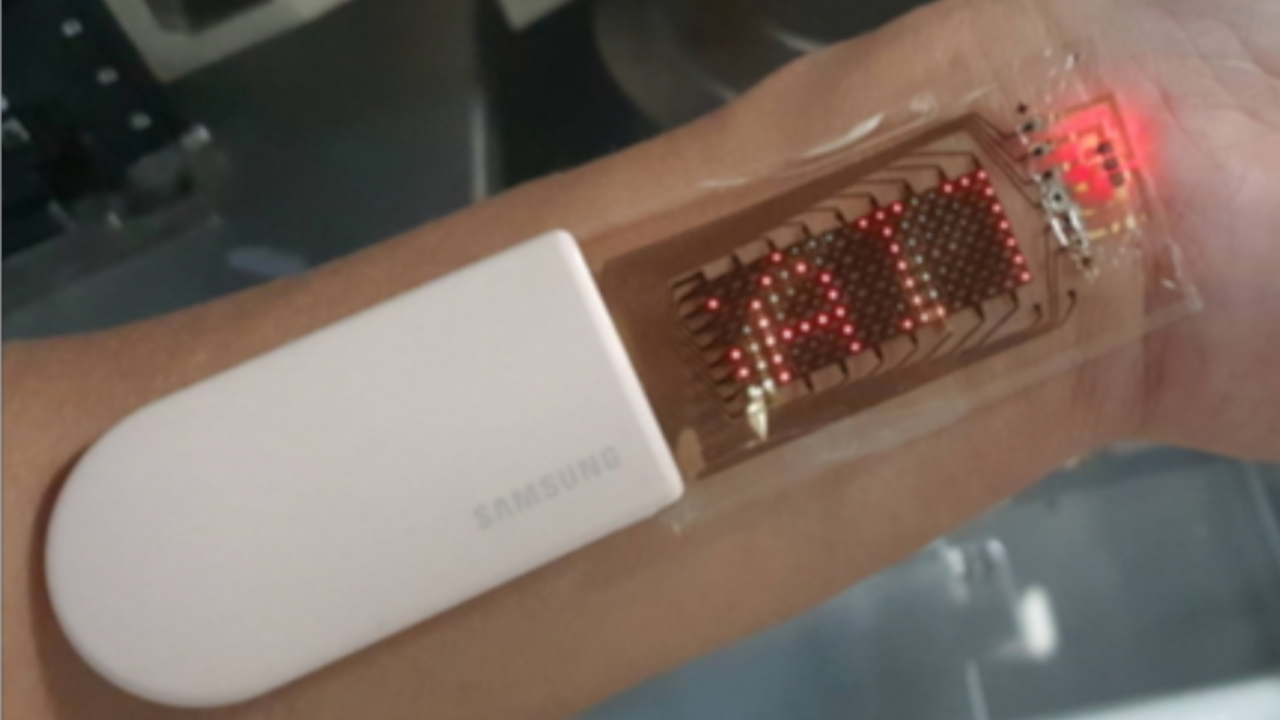Samsung's wild stretchable OLED display could be the future of wearables
Samsung has created a stretchable OLED screen that can be worn on your wrist

Update: Samsung's stretchable display tech might be away off but a sliding screen for a phone or tablet might be here a lot sooner.
While all of us are muddling out way through 2021, Samsung is out here living in the year 2050 with its new stretchable display technology. Unlike folding or rollable screens, these free-form displays can be "stretched in all directions like rubber bands to change their shapes," making for some seriously sci-fi applications.
Samsung posted news of the work its researchers have been doing on its blog, saying that now the "establishment of flexible displays [is] behind us," the next frontier is stretchy displays that allow for "both high-resolution visuals and portability" simultaneously.
- Best smartwatch right now: Top picks for every budget
- Catch up on the Samsung Galaxy Watch 4 rumors
- Plus: Samsung Galaxy Z Fold 3 vs. Galaxy Z Fold 2 — biggest differences to expect

Researchers at the Samsung Advanced Institute of Technology (SAIT) managed to create a device that combines a stretchable organic LED (OLED) display and photoplethysmography (PPG) sensor which measures and displays the wearer's heart rate in real time. You can check out this "stretchable electronic skin" form factor, as Samsung dubs it, in the images above.
Interestingly, the researchers found the display to be pretty robust; while being worn, the device wasn't impacted by wrist movement, and it was noted that it could be stretched by up to 30% with no affect on performance. It even survived being stretched 1,000 times. The material is also extremely effective when it comes to sensing biometrics. Samsung notes that when attached to a moving wrist, the sensor "was found to pick up a heartbeat signal that was 2.4 times stronger than would be picked up by a fixed silicon sensor."
The technology is still in its early stages right now, with the initial applications seemingly more suited to the medical field, but as it's adapted, we could see future fitness trackers evolve into a similar form factor.
"The strength of this technology is that it allows you to measure your biometric data for a longer period without having to remove the solution when you sleep or exercise, since the patch feels like part of your skin," says principal researcher Youngjun Yun.
Get instant access to breaking news, the hottest reviews, great deals and helpful tips.
"You can also check your biometric data right away on the screen without having to transfer it to an external device. The technology can also be expanded to use in wearable healthcare products for adults, children and infants, as well as patients with certain diseases."
- More: Check out our roundup of the best cheap smartwatches

Shabana is T3's News Editor covering tech and gaming, and has been writing about video games for almost a decade (and playing them since forever). As well as contributing to Tom's Guide, she's had bylines at major gaming sites during her freelance career before settling down at T3, and has podcasts, streaming, and video content under her belt to boot. Outside of work, she also plays video games and should really think about expanding her hobbies.
